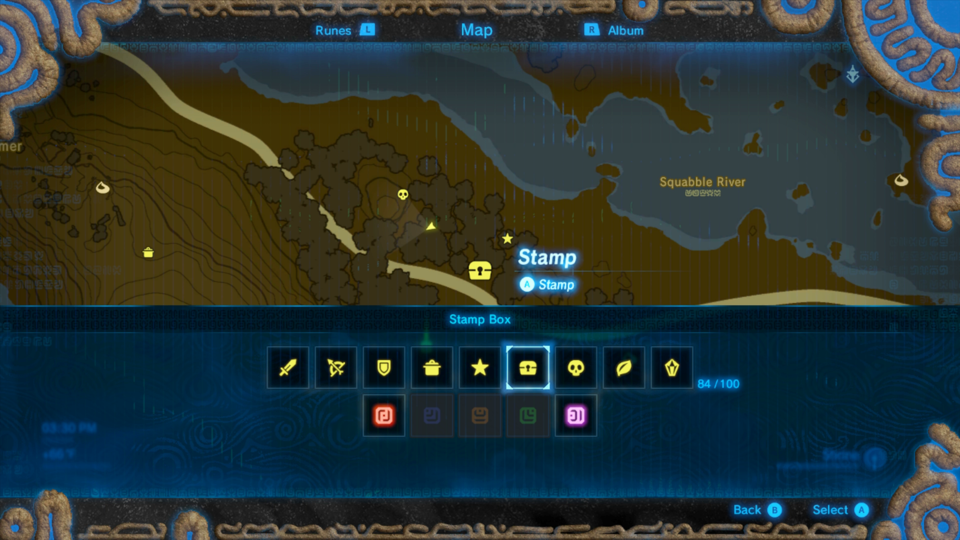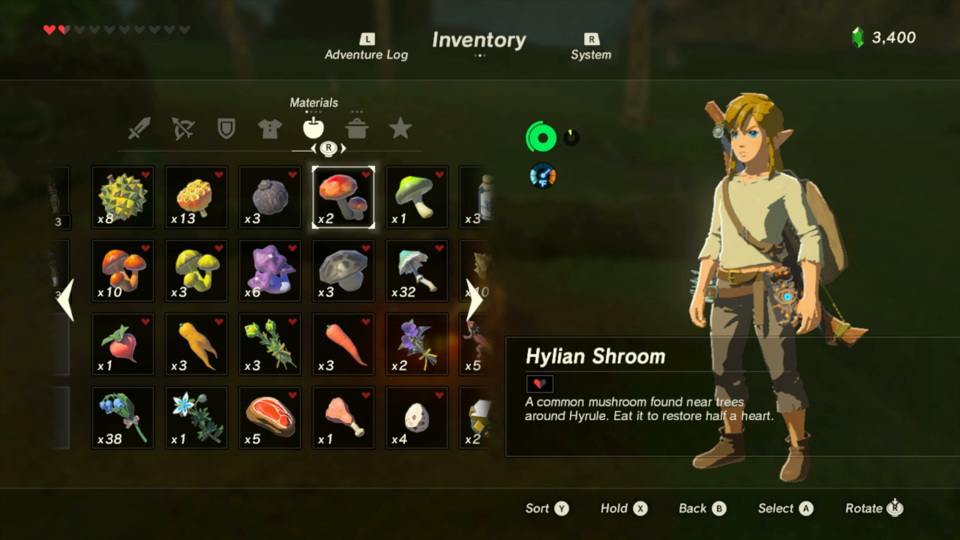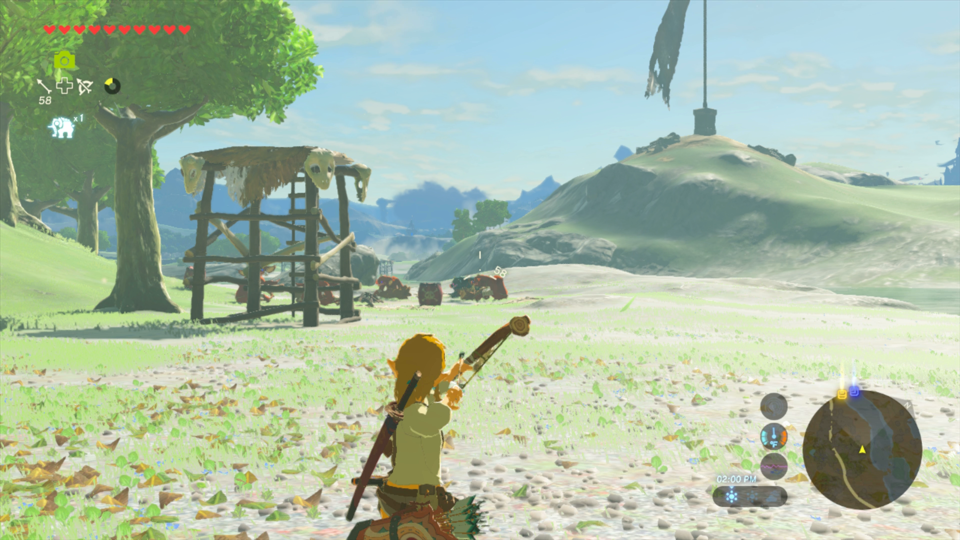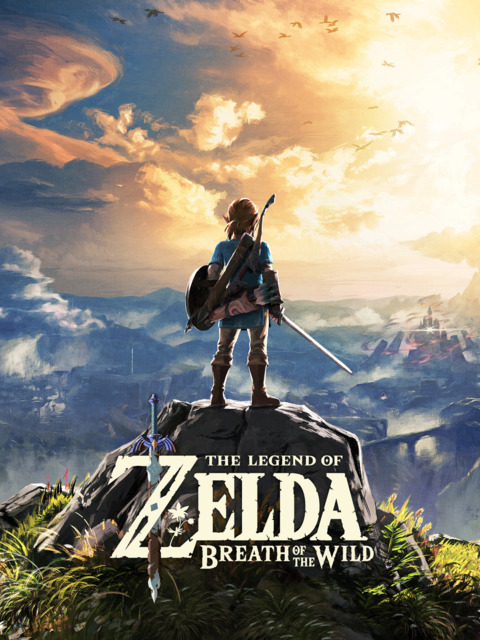The Legend of Zelda: Breath of the Wild Wii U Review
The Legend of Zelda: Breath of the Wild is a fantastic open-world adventure filled with the thrill of discovery. Its world is filled with enough to see and do that you could spend 100 hours in Hyrule and still miss things. Above all else, it’s a game that drives players to experience it on their own terms. By changing up the longstanding Zelda formula it breathes new life into the open-world genre and succeeds even despite some minor technical and design problems.
In typical Zelda fashion, Ganon has assaulted Hyrule and taken Princess Zelda prisoner. It’s up to the chosen hero Link to defeat Ganon and save the princess. Breath of the Wild twists this familiar tale by pushing Link 100 years into a post-Ganon future. In this world, Link, Zelda and the rest of Hyrule failed and Ganon won. Zelda, in her last desperate move, put Link in a 100-year sleep to heal his wounds, hopeful that he will awaken and save the land.
While the setup is interesting the plot ultimately boils down to traditional Zelda fare. Link must journey to gain the power of multiple MacGuffins, culminating in a showdown with Ganon. The game peppers in some cut scenes along the way to flesh out the events leading up to Ganon’s victory. In a series’ first these scenes are voiced, although Link remains silent. The voice acting is fine for the most part, although I found Zelda to be a bit grating, but the scenes are often a bit unintentionally comical thanks to Link’s silence. Most scenes are characters talking at a silent Link, and in some cases even responding as though he said something. In a series where gameplay has always mattered more than lore it’s a small complaint, but it’s still something that comes up more than once throughout the game.

While much of the lore is familiar, the gameplay loop is anything but. After a brief opening where Link acquires four magical runes you are set into the open world. The runes grant Link the ability to freeze time, summon magical bombs, create pillars of ice in water and manipulate magnetic objects. These powers are all you need to conquer any of the puzzles the game throws at you. Additionally, Link can climb almost any surface, limited only by his stamina. Acquiring all the powers in the first couple hours leaves the entire world open to explore. Unlike other open-world games where bridges are closed waiting for the right item, Breath of the Wild invites you to go anywhere right away.
Outside of the main quest or the multitude of optional side quests contained within your quest log, much of the game is about exploring the world. Unlike other open-world games, the map is empty. Link climbs towers to reveal the map but this only reveals topography. Instead, you will need to use high points like a tower to look through your scope and mark places that seem interesting on your map. Shrines and towers have a distinct visual style that is easily recognizable, even early on, and are easy to spot. Other points of interest require more subtle examination of the surroundings. It can be daunting at first but eventually I established a rhythm while exploring. The game does a good job of teaching you its visual language. Eventually you can quickly parse out where enemy camps, human settlements and other points of interest are.
The most plentiful of these places are shrines. Shrines act as fast travel points as well as small contained encounters. Most are puzzles, usually revolving around one power, although a few combat challenges scatter the land as well. Generally, a shrine takes only a few minutes to complete, although there are some tricky puzzles to be found. Most shrines also contain one or more chests, usually with valuable items or gear. Getting these chests is the “challenge mode” of the shrines, often requiring more complete use of the mechanics being tested. Completing a shrine rewards a Spirit Orb. These take the place of heart pieces and every four can be turned in for another heart or more stamina.
For most players, including myself, completing multiple shrines becomes essential. Link starts the game with three hearts and a small stamina wheel. The stamina wheel is ridiculously small at the start of the game given the size and scope of the landscape. Early on climbing is a chore. Most of it is spent trying to discover points in the geometry where Link can stand and recover stamina. It’s an oddly restricting system in a game that begs to be freely explored. Eventually between stamina upgrades and learning how to better climb it becomes manageable but it’s still frustrating that it takes several hours to get to that point.
Health is an issue throughout the game. Enemies hit hard, even later in the game with more health and better equipment. Starting out, it’s not uncommon to have enemies kill you in one hit. Even later some of the more powerful monsters can take anywhere from half to 75 percent of your health in a single hit. It makes combat dangerous in a way most Zelda games don’t. I spent time really working to learn and master the dodging system. While it is relatively easy to dodge most attacks, a well-timed dodge puts Link into a slow-motion sequence for a few seconds. During this time, you can whack away freely without fear of being hit. For some of the tougher enemies this is about the only way to do any noticeable chunks of damage. The combat isn’t particularly difficult and most of the time the sense of danger is enjoyable. There are however, moments where it can feel cheap, especially if you survive multiple enemies only to be killed instantly by a lucky swing at the last second.

Because enemies deal so much damage, managing health is essential. In yet another break from Zelda tradition, hearts do not appear in the world. Instead, health is regained by eating food. In a nod to survival games, Link will need to gather and hunt for food in the world. Everything from mushrooms and fruit to deer and boars can be hunted. Food can be eaten raw but the benefits are minor, usually no more than a couple hearts. To maximize value, you will want to cook. Throughout the world, and at every settlement, is a cooking pot. There you can mix and match ingredients to create meals and elixirs. The game doesn’t teach Link any recipes to start. Although there are books and characters that will give Link tips, most recipes are found through experimentation. These meals not only heal more hearts; many also provide buffs. These buffs range from simple boosts to attack and defense, to temporarily increasing your max health or even warding off the elements.
Those elements are found all over the world. A snowy mountaintop will chill Link to the bone and require warmer clothes or some spicy food. Lightning will strike anything metal, including that sword on your back. Rain will make surfaces slippery, making it almost impossible to climb. For the most part these were minor inconveniences. You have a few brief moments to adjust your gear or eat something before the elements damage you. Rain is the only one that really frustrated me, and even then, very rarely. Getting stuck halfway up a mountain or being unable to carry a flame to complete a quest was annoying. Thankfully rain doesn’t last too long but it’s still an inconvenience when traversing the world.
That world feels lush and lived in. In addition to shrines there are several monster outposts, towns and settlements to explore. Even just traveling the roads is sure to offer encounters, whether it’s with a pair of mushroom hunting sisters or a travelling merchant just trying to make it. The characters all feel sincere and like real people. They almost all hint at some deeper story, even if they don’t tell it. Many also have side quests ranging from typical fetch quests to more in-depth puzzles. Talking to people never felt like a chore and their slice of life views on the state of the world provided some of the best world building in the game.
Eventually, you may finally decide to tackle the main quest. In doing so the game will take you to its approximation of a Zelda dungeon. These four “dungeons” step away from the classic concepts. There isn’t a Master Key or a new item. They still feature a boss fight but those fights will test your skill with the four runes acquired at the start of the game. They feel less like the sprawling dungeons of previous entries and more like extended shrines: puzzle rooms connected around a central theme. They are interesting to explore but felt a bit short, especially considering their place as set pieces in a Zelda game.

While the core loop is fantastic it isn’t without its frustrations. Link doesn’t begin the game with a weapon or shield. Instead, everything is found lying around, in chests, taken from enemies or purchased from a merchant. Everything, except armor, also has a durability and will eventually break. Even the sturdiest weapons can only last a few fights at most. There are some “permanent” weapons in the game but even those have restrictions on them in the form of a cooldown timer or resource cost to use them again. The durability is a larger issue early on, when weapons deal less damage and therefore require more use to beat bigger monsters, but still comes up throughout the game. It creates an incentive to avoid unnecessary combat. I would often simply run right past enemies unless there was no other option.
The weapon durability leads into another problem: the inventory. This is a game about inventory management as much as anything else. It’s simple enough to quickly equip weapons, shields and bows using the D-pad. Dropping weapons is another story. You have to open the menu, get to the right page, select the item and then select drop. It seems like a minor complaint, but over the course of the game I ended up doing this hundreds of times as I was replacing damaged weapons or cycling out for stronger ones. It becomes even worse if you open a chest with a full inventory. You must do all the above steps and then open the chest again. You can upgrade your storage capacity by turning in hidden items to a character, but even after multiple upgrades the issue still cropped up.
The weapons aren’t the only time the inventory becomes a hassle. Cooking doesn’t save recipes or allow you to make things in batches. Every time you want to make a dish you need to thumb through and select all the ingredients individually. If you want to make more than one you need to do this every time. And if you make a particularly useful one you better write it down.
These inventory problems, as well as the other minor UI annoyances, all added up over the course of my 60 hours with the game. The most disappointing aspect is that most could have been solved had the developers used the Wii U Gamepad for more than just Off-TV Play. Being able to quickly drop an item using the touch screen would make it less of a chore. Having the map always visible makes stickers, which only show when you are near them, more valuable since you can always see where you are in relation to them. Nintendo has remastered four Zelda games with second-screen functionality and each of those has become the definitive version of their respective game. We know putting inventory and map management on the second screen works well. The only reason this makes sense is business. Nintendo knew these problems would be solved on the Wii U but didn’t want word to get out that the “best” version of the game wasn’t the Switch version. For a game that started as a Wii U title it’s sad to see that it doesn’t utilize the system’s defining feature.

The UI isn’t the only issue. The game has its share of technical problems as well. With the hardware gap, it was never going to look like Horizon: Zero Dawn. In some respects, it’s amazing a game with this scope even runs on the Wii U. Sadly it doesn’t run as well as you would hope. Framerate issues are common whenever several moving objects are on screen. I never felt they made the game wholly unplayable but they are noticeable and happen often enough. Entering towns or any populated area can really drag things down. The draw distance also leaves something to be desired. While shrines and towers usually glow in the distance, everything else is a bit harder to discern. Enemies and other characters don’t exist until you are close enough to see them without your scope. Occasionally, even a structure or building may not show up when looking from your high vantage point. For a game that requires you to stake out a high point and mark points of interest it doesn’t always make that easy.
The design and technical issues are all minor for the most part. Even while they annoyed they never made the game unplayable. This is still a phenomenal game that is hampered by small issues. In the grand scope of my time with the game they heavily impacted a very small percentage. The rest of the game makes it relatively easy to look past them and find the fun in the moment to moment.
The Legend of Zelda: Breath of the Wild is an expansive game that breaks many of the series’ longstanding tropes. In doing so it delivers a fresh take on an established classic that could shape the series future much like Ocarina of Time once did. The small issues are much easier to overlook when compared to the grand scope of the game. At its highest points Breath of the Wild is a true masterpiece. It provides a jolt of life to a classic franchise while preserving the series’ legacy. It’s both a Zelda game and something else entirely and that is precisely what makes it special.
